Please login or click here to join.
Forgot Password? Click Here to reset pasword
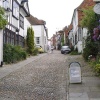 | 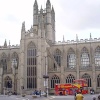 | 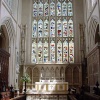 |  | 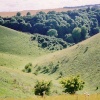 | 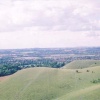 |
| Edward Lever Posts: 734 Joined: 22nd Dec 2005 Location: UK | quotePosted at 13:04 on 27th January 2014 I recall that PoE in the past has had a policy of not accepting monochrome images or heavily processed colour images, but it seems from the recent uploads, that this is not now the case. In fact there do not seem to be any guidelines (as far as I can see) on what is now acceptable or appropriate. I have nothing against 'photoshopping' , but the purpose of PoE was, I think, to be a collection of more-or-less natural looking pictures of the English countryside and towns, to represent England in all the natural cycle of seasons. My own 'take' on photography is to capture the original scene as accurately as possible, and I therefore limit my processing to a little sharpening and cropping occasionally, but that is all. We all have our own ways of enjoying photography, and I do not mean to be critical of 'photoshopping', but it does not appeal to me personally, except in a few limited cases where conversion to a painting or drawing might be attractive.
|
| Ron Brind Posts: 19041 Joined: 26th Oct 2003 Location: England | quotePosted at 13:58 on 27th January 2014 Thanks for mentioning it guys, in fact I can confirm that black and white were refused a while back, as are heavily 'worked on' images, HDR and so on, but we have to try to decide what to accept and yet be fair to all, without accepting too many of the images being discussed, because at the end of the day and as you rightly point out, they won't sell and in anycase we don't want POE overloaded with what I think can sometimes be absolute rubbish, but on the other hand the person submitting the image has a reason for doing so. Just keep in mind that people like to experiment, promote, show off, ask questions about, call it what you will images that don't necessarily suit all and I generally have to say okay let this one go, or not as the case maybe. I can assure you there won't be too many of them, and we may well even go back into the darkness of the database and remove some anyway, but as I say above thanks for talking about it here in the forum, at least you know we are listening. |
rustyruth Posts: 18773 Joined: 23rd Oct 2012 Location: England | quotePosted at 14:08 on 27th January 2014 My I add that I entirely agree with Edward. I've nothing against straightening and cropping which is what you'd expect people to do (well not all of them I think we've mentioned uploads with wonky horizons) to get the best out of an image, but heavily photoshopped images look entirely false to me. There are sites for these types of manipulated images but I don't think it's POE. |
| Martin Humphreys Posts: 58 Joined: 31st May 2012 Location: England | quotePosted at 16:07 on 27th January 2014 I too am in agreement with the above comments. I try to keep my images as they were taken .. with minimal alterations, the odd crop a bit of lightening or darkening & where possible the odd tv aerial or cable erased as I can't stand to see them on a gorgeous image of a cottage for instance. But some images ... as good as they are .. must look nothing like the image that was taken due to photoshoping or as of late in infra red.Each to their own of course .. but like Ruth says .. I don't think it's POE either ? It kind of feels "false" to me. |
| Andy Dodds Posts: 539 Joined: 17th May 2012 Location: England | quotePosted at 16:30 on 27th January 2014 My limits in editing consist of messing around with contrast and after that I'm stuck lol. Same for me with the telegraph lines aswell John I always think I might have took a decent shot then get home and there it is straight across the middle of the screen |
rustyruth Posts: 18773 Joined: 23rd Oct 2012 Location: England | quotePosted at 16:44 on 27th January 2014 Cars, people, power lines and bins bug me. No matter how careful you are one of them will appear when you upload the photo from camera to computer. If they are at the edge I will crop them off, but otherwise they stay. |
| Andy Dodds Posts: 539 Joined: 17th May 2012 Location: England | quotePosted at 16:48 on 27th January 2014 I took 1 of conisborough castle with the stocks in front of it but then had to crop because there was a bin and a metal park bench at the side of it lol |
| Dave John Posts: 22335 Joined: 27th Feb 2011 Location: England | quotePosted at 20:11 on 27th January 2014 I don’t have a problem with Photoshop at all, as long as it is not over the top. After all it is simply the digital equivalent of the darkroom. We used to have different chemicals for different effects, graded papers to cope with contrast, and odd shaped papers and cards for dodging and burning. All those tools are in Photoshop plus many more. Whilst I am all in favour of ‘getting it right in camera’ you will never get the scene that you thought you pointed your camera at. Whatever camera you have, £60 point and shoot or £2000 top notch SLR, if you are set to shoot JPEG when you press the button the camera actually captures a RAW image, which is then processed ‘in camera’ to a formula laid down by the particular camera manufacturer. And that is what you see on the preview screen on the back of the camera and on you PC. If you set up two cameras from two different manufacturers and made sure all the settings were identical, you would end up with two images showing different contrast and colour ranges. These differences may be very slight but they would be there. Of course all the manufacturers ‘programmes’ are created with phenomenal research but each is slightly different from the others. The human eye has a range far wider than any camera sensor so you see detail in the deep shadows and likewise can differentiate the detail in the highlights. The sensor cannot, hence you often get blown highlights and impenetrable shadows. There are literally hundreds if not thousands of very good images on POE that could be improved vastly with a few minutes editing. A few minutes spent with a bit of subtle dodging and burning and you can pull much of the detail that you saw at the time you pressed the button. But the biggest improvement of all is contrast, or rather lack of it. A couple of minutes with either the ‘contrast slider’ or the more powerful ‘curves tool’ can enhance and improve the image greatly. Just think of some of the classic images of the past, Ansel Adams for instance, all his images were hugely manipulated in the darkroom. Straightening or leveling is an absolute must. Cropping is usually required to some extent because the majority of viewfinders only show between 90-95% of what the sensor records so no matter how careful you are irritating bits can creep in at the edges. Cloning out aerials and power cables, yes, although I don’t rate that as highly as cloning out ‘dust bunnies’ those annoying smudge like blurs that are so often seen in skies and other areas of plain tones. And as to black and white, again I have no problem at all. In a lot of cases I firmly believe a 'good' B&W image is better than a colour image in that it concentrates the eye more. Not so keen on HDR as it is so very difficult to get right. I can't say that I have seemn many on POE that are not a bit over cooked, one or two way over the top. Infrared is something I would like to have a play at sometime because the right subject in the right light can produce some amazing images. |
| Edward Lever Posts: 734 Joined: 22nd Dec 2005 Location: UK | quotePosted at 21:07 on 27th January 2014 Whilst I agree with many of the points Dave makes about the virtues of Photoshop, it is a very expensive and complicated piece of software, which if bought legitimately, is available only on a subscription basis. Most camera users do not have the inclination or the time to do RAW developing after taking the picture. Modern compact cameras and DSLRs do a very good job of 'in camera' processing and deliver a pretty good JPG immediately. The camera menu allows you to set the resolution and 'style' of image you want. Exposure is probably the area where things can go wrong, but even using RAW, there is no way of recovering detail in clipped highlights. The sort of darkroom antics which were necessary in the old days arose mainly because of the variability of the chemistry. The digital world is much more precise and consistent. Having said that, I do agree that RAW processing gives the ability to tweak after the event. Photoshop is by no means the only option, there are cheaper or free RAW editing tools, such as the excellent Canon Digital Photo Professional Software, which is bundled free with Canon DSLRs. |
| Dave John Posts: 22335 Joined: 27th Feb 2011 Location: England | quotePosted at 21:30 on 27th January 2014 Totally agree Edward. But I use the name 'Photoshop' name loosely refering to editing software in general. It has become the standard word I think!! The full Photoshop is indeed phenominally (to most of us prohibitally!!) expensive as you so rightly infer(CS6 I think was in the region of £650-700!!) and the latest version is a subscription based programme, but still costly when you add the months up. Adobe Elements is a much more affordable programme based on Photoshop and comes with 'Adobe Camera Raw' as standard. ACR is the Adobe raw converter for both Photoshop and Elements. All the camera manufacturers offer software of one sort or another to enable the user to get to grips with editing. Canon's DPP is excellent it has to be said, as I suspect is Nikon's equvalent but have never used that. As to clipped highlights, the accepted method of exposing digital is 'expose to the right' which refers to the histogram where the highlight tones are to the right, which is exactly the same principle as we used to use for slide (transparency) film when you would 'expose for the highlights' and let the shadows look after themselves. And as you rightly Edward say the moderm cameras with their very sophisticated 'matrix' or 'evaluative' metering system do produce excellent results. |